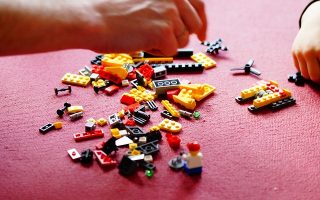Virtual Reality Headsets – what harm do they do to children?

Virtual reality is the concept of being able to enter an imaginary world created by technology. Currently this is achieved by wearing goggles or headsets with a screen in or a mobile phone slotted in. The device recognises which way the user is facing and adjusts the image on the screen to give the user a 360° view, in addition to the ability to look up and down. Current devices have onscreen menus, the user moves their head to highlight the button they want to select and they use the one button to click.
However this is just the beginning of what is possible. The technology to create surround sound already exists. Digital scent technology has existed since the 1950s when Smell-O-Vision and AromaRama developed technology to release smells as a film was showing. Although ultimately doomed, this showed the interest in immersive experiences and computer generated smells began to be developed in the 1990s. It won’t be long before the other senses follow.
What are the risks?
Our eyes are not used to focussing on screens so near to our face, so children are likely to be prone to the side-effects of eye fatigue or strain. For years our eyes have been used to looking at screens a couple of metres away in the corner of the room, then this transferred to screens on a desk, to screens on our laps and in our hands. Adults recognise when their eyes are tired and know when to take a walk, make coffee or do something else. This is a skill that’s hard for children to recognise and very few have the internal skills to know how to deal with it, just think how hard it is to get a child off the computer.
Symptoms of eye strain:
Headaches,
Blurred vision,
Difficulty focussing,
Tiredness,
Sore or itchy eyes,
Watery or dry eyes.
Unfortunately these sensations can also lead a child to become more determined to finish something, more frustrated when they don’t then complete their game and subsequently more determined to complete the game. It becomes an eye strain loop that is hard for adults to break, let alone children.
As Virtual Reality is immersive, it can trick the brain into thinking that the experiences are real. For example rollercoaster simulations can give some users the sick feeling that is caused by the movement, despite them not actually moving. For children this is huge, as they will be experiencing the same emotions and sensations that they would encounter by doing the activity in real life.
The blue light emitted from screens could be delaying the release of melatonin in the brain. Melatonin is the drug that helps regulate our sleep pattern, helping us to feel tired in the evenings as the darkness falls, telling our body to prepare for sleep, reducing the production of urine during the night and helping to wake us up in the morning. Therefore using screens late at night has an impact on our sleep patterns.
| Do’s
For young children put a time limit on their use of VR. Teach your child how to recognise the symptoms of eye strain from middle childhood. Show your child how you recognise your eyes are getting tired and comment on how you are choosing to walk away. |
Don’ts
Let your child use VR headsets late at night. Minimise the emotional and physical sensation of the experience, your child may need your support to cope with the after-effects. |
For more information, sign up for your free indispensable guide to technology:



